Social-Emotional Learning Activities for the Elementary Grades
$29.95
The Best from Innerchoice Publishing
Social-Emotional Learning Activities For The Elementary Grades is a collection of the most effective instructional strategies available in helping students: Develop an accurate concept of who they are. Constructively express and control feelings. Accurately assess personal strengths and limitations. Think through the consequences of behaviors before they act. Successfully manage feelings, thoughts, and behaviors in a variety of situations. Take the perspective of others. Develop respect and empathy for others. Effectively communicate both verbally and non-verbally. Listen well to, and cooperate with others. Learn to manage conflicts pro-socially. Develop skills for interacting positively and productively with others. Learn strategies for managing stress.
All 170 pages are written and designed for clarity and ease of implementation. Each activity includes behavioral objectives, step-by-step instructions, and thought-provoking discussion questions formulated to elicit higher-level thinking in students. Many activities also include reproducible student handouts. Engage your students in these enjoyable and effective activities to help them develop the social and emotional learning skills that will serve them throughout their lives.
Introduction
This activity guide is a collection of the most popular and effective social and emotional learning activities offered by Innerchoice Publishing. Over the years, Innerchoice Publishing has developed dozens of activity guides which have been used in thousands of schools throughout the country. Many of these books have been translated and used sucessfully in other countries interested in developing the emotional and social aspects of students lives. You are invited to use this newest contribution to the SEL curricular mosaic as:
• the core of your SEL curriculum
• a specialized SEL supplement to your existing curriculum
This book provides relevant student friendly activities for classroom and counseling groups. For optimum impact SEL is not a single program or group of activities but a coordinated framework across classrooms, counseling groups, homes, communities and districts.
The bottom line is, don’t neglect or take for granted the emotional life of your students. Feelings, self-awareness, life skills, conflict management, self-esteem, and all of the other developmental areas now identified as social emotional learning are critically important. An impressive array of research from multiple fields supports the validity of time and energy spent by educators in these domains. Emotions are not unruly remnants of stone-age survival to be hushed and otherwise ignored while we develop cognitive skills. Emotions drive our behavior, shape our values, and predispose us to choose one course of action over others. Emotional and rational skills are equally important interdependent components of human intelligence.
Unit Organization
The five units in this guide each contain group activities, Sharing Circles, individual experience sheets, and comprise a complete SEL curriculum. They are:
• Self-awareness
Building a vocabulary for feelings, knowing the likes, dislikes, hopes, preferences, talents, shortcomings, and other uniquenesses that make up the individual. Becoming aware of inner and outer states and processes. Establishing a firm sense of identity and feeling esteem and acceptance of oneself; monitoring “self-talk” to catch negative messages such as internal put-downs; acknowledging the talents and abilities of self and others.
• Self-Management
Knowing the relationship between thoughts, feelings and actions; accurately reading feeling cues in others and responding appropriately; realizing what is behind feelings (e.g. the primary feelings underlying anger) and learning how to constructively express and control feelings. Understanding what stress is, where it comes from, and how it affects daily living; learning to use exercise, guided imagery, relaxation methods, and attitude changes to control and relieve stress.
• Social Awareness
Taking the perspective and understanding the feelings of others; developing caring and compassionate attitudes. Working self-reflectively in groups while monitoring behaviors and roles; practicing cooperation and interdependence.
• Relationship Skills
Learning and practicing effective communication skills; listening actively; and, engaging in effective two-way communication using good listening and speaking skills. Understanding that conflict is normal and potentially productive; learning how to fight fair with others; learning and practicing a variety of conflict-resolution strategies.
• Responsible Decision Making
Examining what goes into making decisions; considering actions and knowing their consequence; recognizing the existence of personal choice in almost all situations; taking responsibility for decisions and actions.
Each of these units contains eight to ten group activities and six fully developed Sharing Circles, along with a list of additional Sharing Circle topics, which allow you to repeat the impact of the powerful circle process for many weeks. Before you lead your first Sharing Circle, be sure to read the section, “How to Conduct A Sharing Circle” on page 15.
Many of the activities include handouts, called “Experience Sheets,” for you to duplicate and distribute to students. Experience sheets are written in a conversational style and speak directly to the individual student. Directions for their use are imbedded in the printed procedure for leading each activity.
The units are arranged in a suggested order, but may be implemented with considerable flexibility. We encourage you to maintain an agile, expansive attitude as you move through (or skip among) the units. Allow the reactions of students to spark new ideas for strengthening social and emotional skills in each topic area.
Finally, please make any adjustments necessary to accommodate the interests, abilities, cultural backgrounds and learning styles of your students. Your experience and regular contact with students put you in an ideal position to interpret signals regarding relevancy and modify the activities accordingly.
Table of Contents
INTRODUCTION
THE IMPACT OF SOCIAL AND EMOTIONAL LEARNING
SEL SUPER STRATEGY: THE SHARING CIRCLE
HOW TO CONDUCT SHARING CIRCLES
ACTIVITY UNITS
- Self Awareness
- Self Management
- Social Awareness
- Relationship Skills
- Responsible Decision Making
Grade 2-8, 108 pages, 8-1/2 x 11, paperback
Description
The Best from Innerchoice Publishing
Social-Emotional Learning Activities For The Elementary Grades is a collection of the most effective instructional strategies available in helping students: Develop an accurate concept of who they are. Constructively express and control feelings. Accurately assess personal strengths and limitations. Think through the consequences of behaviors before they act. Successfully manage feelings, thoughts, and behaviors in a variety of situations. Take the perspective of others. Develop respect and empathy for others. Effectively communicate both verbally and non-verbally. Listen well to, and cooperate with others. Learn to manage conflicts pro-socially. Develop skills for interacting positively and productively with others. Learn strategies for managing stress.
All 170 pages are written and designed for clarity and ease of implementation. Each activity includes behavioral objectives, step-by-step instructions, and thought-provoking discussion questions formulated to elicit higher-level thinking in students. Many activities also include reproducible student handouts. Engage your students in these enjoyable and effective activities to help them develop the social and emotional learning skills that will serve them throughout their lives.
Introduction
This activity guide is a collection of the most popular and effective social and emotional learning activities offered by Innerchoice Publishing. Over the years, Innerchoice Publishing has developed dozens of activity guides which have been used in thousands of schools throughout the country. Many of these books have been translated and used sucessfully in other countries interested in developing the emotional and social aspects of students lives. You are invited to use this newest contribution to the SEL curricular mosaic as:
• the core of your SEL curriculum
• a specialized SEL supplement to your existing curriculum
This book provides relevant student friendly activities for classroom and counseling groups. For optimum impact SEL is not a single program or group of activities but a coordinated framework across classrooms, counseling groups, homes, communities and districts.
The bottom line is, don’t neglect or take for granted the emotional life of your students. Feelings, self-awareness, life skills, conflict management, self-esteem, and all of the other developmental areas now identified as social emotional learning are critically important. An impressive array of research from multiple fields supports the validity of time and energy spent by educators in these domains. Emotions are not unruly remnants of stone-age survival to be hushed and otherwise ignored while we develop cognitive skills. Emotions drive our behavior, shape our values, and predispose us to choose one course of action over others. Emotional and rational skills are equally important interdependent components of human intelligence.
Unit Organization
The five units in this guide each contain group activities, Sharing Circles, individual experience sheets, and comprise a complete SEL curriculum. They are:
• Self-awareness
Building a vocabulary for feelings, knowing the likes, dislikes, hopes, preferences, talents, shortcomings, and other uniquenesses that make up the individual. Becoming aware of inner and outer states and processes. Establishing a firm sense of identity and feeling esteem and acceptance of oneself; monitoring “self-talk” to catch negative messages such as internal put-downs; acknowledging the talents and abilities of self and others.
• Self-Management
Knowing the relationship between thoughts, feelings and actions; accurately reading feeling cues in others and responding appropriately; realizing what is behind feelings (e.g. the primary feelings underlying anger) and learning how to constructively express and control feelings. Understanding what stress is, where it comes from, and how it affects daily living; learning to use exercise, guided imagery, relaxation methods, and attitude changes to control and relieve stress.
• Social Awareness
Taking the perspective and understanding the feelings of others; developing caring and compassionate attitudes. Working self-reflectively in groups while monitoring behaviors and roles; practicing cooperation and interdependence.
• Relationship Skills
Learning and practicing effective communication skills; listening actively; and, engaging in effective two-way communication using good listening and speaking skills. Understanding that conflict is normal and potentially productive; learning how to fight fair with others; learning and practicing a variety of conflict-resolution strategies.
• Responsible Decision Making
Examining what goes into making decisions; considering actions and knowing their consequence; recognizing the existence of personal choice in almost all situations; taking responsibility for decisions and actions.
Each of these units contains eight to ten group activities and six fully developed Sharing Circles, along with a list of additional Sharing Circle topics, which allow you to repeat the impact of the powerful circle process for many weeks. Before you lead your first Sharing Circle, be sure to read the section, “How to Conduct A Sharing Circle” on page 15.
Many of the activities include handouts, called “Experience Sheets,” for you to duplicate and distribute to students. Experience sheets are written in a conversational style and speak directly to the individual student. Directions for their use are imbedded in the printed procedure for leading each activity.
The units are arranged in a suggested order, but may be implemented with considerable flexibility. We encourage you to maintain an agile, expansive attitude as you move through (or skip among) the units. Allow the reactions of students to spark new ideas for strengthening social and emotional skills in each topic area.
Finally, please make any adjustments necessary to accommodate the interests, abilities, cultural backgrounds and learning styles of your students. Your experience and regular contact with students put you in an ideal position to interpret signals regarding relevancy and modify the activities accordingly.
Table of Contents
INTRODUCTION
THE IMPACT OF SOCIAL AND EMOTIONAL LEARNING
SEL SUPER STRATEGY: THE SHARING CIRCLE
HOW TO CONDUCT SHARING CIRCLES
ACTIVITY UNITS
- Self Awareness
- Self Management
- Social Awareness
- Relationship Skills
- Responsible Decision Making
Grade 2-8, 108 pages, 8-1/2 x 11, paperback

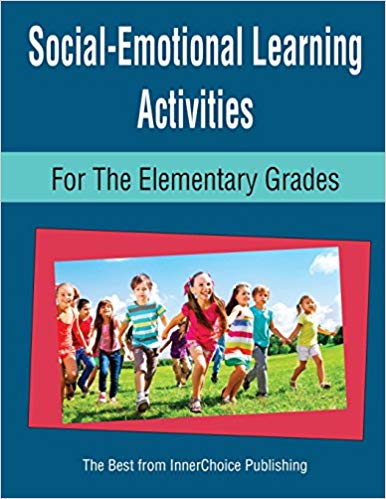
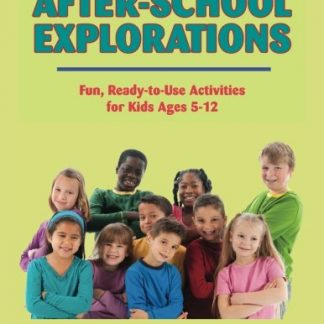
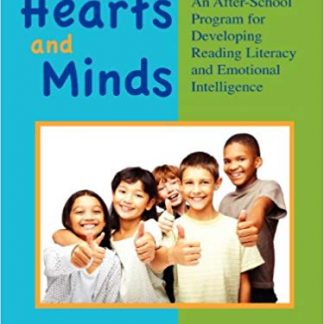
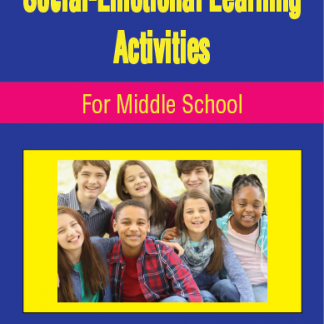
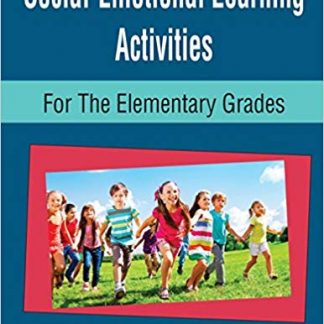
Reviews
There are no reviews yet.